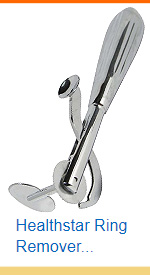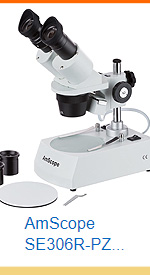ARE INSCRIPTIONS MAN-MADE FLAWS?
ARE DIAMOND LASER INSCRIPTIONS GOOD OR BAD?
This post contains affiliate links. If you use these links to buy something I may earn a commission. Thanks! As an Amazon Associate I also earn from qualifying purchases.

Does your diamond contain a man-made flaw?
We’ll find out…
But, before we talk about diamond inscriptions and laser inscribing, we need to delve deeper into diamond quality and how it affects the value of your diamond.
To do so, we turn to the 4 C’s.
The 4 C’s are cut, color, clarity and carat weight. All four categories weigh heavily on the value of a diamond. When people shop and compare diamond prices, they’re comparing the 4C’s.
Comparing apples to apples:
Now 3 of these 4C’s determine the quality of the stone: cut, color and clarity.
Those 3C’s look at the perfection of the diamond, the color of the diamond, and the shape of the diamond. They grade how clean the diamond is. How pure white the diamond is, and how perfect the cut is (angles, proportions, percentages).
But the real focus is on…
Clarity
Clarity is the only category that truly affects our topic today.
All the others help define the diamond and it’s value, but clarity is the grade that tends to get a magnified look.
Clarity in particular, looks at every single dot, every microscopic pinpoint, every hairline inclusion and flaw.
Clarity looks at all the nooks and crannies with 10x magnification.
Clarity scopes the inside of the diamond and the surface of the diamond as well. Every fleck, every cloud, every feather is evaluated. Nothing is overlooked.
(Well, almost, that’s where we’re going…)
After all is said and done, after the quality of the diamond is judged and the information for a detailed certification report obtained, we do a very ODD thing…
We mMar the diamond.
We actually laser burn numbers and letters into the stone.
We brand the certification report number right onto the diamond (see picture).
The branding act itself caused a lot of controversy when laser inscribed diamonds were first introduced many years ago.
Gemologists and Diamontologists (experts in the field of gems and diamonds) had heated battles over the value of these man-made flaws and inscriptions. Were they good or bad? How do they really affect the quality of the diamond? Will inscriptions stand up to the scrutiny or actually harm the value of the diamond in the future?
Where else would one judge a work of art for perfection, and then add flaws to it?
It sounds funny, but that’s exactly what we’re doing with laser inscriptions. We’re digging into the diamond and removing some of the stone (Does this also make the diamond smaller in carat size? Yes, but not enough to make any difference).
We create indentations and grooves in the stone just like Egyptians did with Hieroglyphs.
Does this make any sense?
When we talk about clarity, we’re talking about making opinions about microscopic inclusions (as seen with a microscope or a 10x jeweler’s loupe), flaws and surface blemishes.
So why aren’t these tiny nicks we engrave in the girdle considered a surface blemish? We grade little bitty naturals and trigons as blemishes???
So why aren’t grooves considered a flaw?
And not only one flaw, but lots of them. Look at the GIA etching in the image. There’s almost a dozen flaws carved into it now. Aren’t we being a bit hypocritical to exclude these as an imperfections now?
Flawless?
Let’s take a moment and think about a flawless diamond. A flawless diamond has no flaws, inclusions, blemishes, feathers, clouds, trigons or naturals (surface nicks).
Flawless, in every sense, is supposed to be flawless.
Void of any marks, mars or microscopic characteristics. So by adding a laser inscription to this diamond, do we not dig up the side of the diamond?
The branded girdle is not perfect anymore!
Why doesn’t laser inscripting hurt the clarity? By all means it should. If a dot can cause a lower rating, wouldn’t lots of dots and letters be worse?
It really makes you think now doesn’t it?
You want to know WHY inscriptions aren’t taken into consideration for clarity grading?
I’ll tell you…
Certification companies overlook inscriptions because…
They are the ones that are actually engraving and marring the diamond.
BINGO!
Because they inscribe the diamonds themselves, they have the ability to exclude them from the actual grading (plus, they are graded BEFORE they are marred).
Very interesting indeed.
So as long as the certification companies do the etchings, they have no choice but to disregard their impact on the diamond’s quality.
They wouldn’t grade the stone lower for that. It’s like the engravings don’t even exist. Inscriptions are an entirely different entity when it comes to grading.
So why laser inscribe?
Why do certification companies laser inscribe diamonds?
If laser inscribing doesn’t hurt or harm the value of a diamond… Does it help?
The answer is:
Yes!
The easiest way for a consumer to identify a particular diamond is by looking at the laser inscription.
GIA (The Gemological Institute of America) knows this. They know a customer can look at the inscription on a diamond and compare it to the inscription number on the certificate report and make an exact match.
That report number etched forever into the girdle of the diamond proves that the diamond’s been graded by an independent appraiser (in this case GIA) and that a certification report has been created with it.
That report and inscription are there to help avoid confusion, and deter fraud in the diamond industry.
Overlooked man-made flaws…
Certification companies feel so strongly about laser inscribed diamonds that they are willing to overlook these man-made flaws.
They’ve determined that it doesn’t hurt the value of the diamond. But the truth is, laser inscribed diamonds can actually increase your diamond’s value.
How so?
Because a diamond that has a certificate and laser inscription are worth more because it’s solid proof of the quality. It’s factual and accurate and makes the diamond more valuable.
Plus, it stops diamond switching!
Laser inscriptions are the number one way to stop diamond switching.
They help protect the customer’s diamond from being stolen by dishonest jewelers.
So is it fair to disregard our man-made imperfections? If it helps stop theft and crime, if it helps the customer identify their diamond easily under a microscope, and if it doesn’t hurt the value of a diamond in the least, then I say YES!!!
Yes, it is fair to turn the cheek on laser inscriptions. And jewelers need laser inscribed diamonds for our own protection too. You see, they help more than they hurt.
I for one, would never ever buy a diamond that wasn’t laser inscribed.
I feel that strongly for them.
I trust in them. I trust what they stand for. I like how they give customers peace of mind when buying a diamond.
No one is bothered by these little engravings. Those little etchings in the side of the diamond are so small, that even under a microscope they’re still hard to locate.
So I say, laser-away!
I like seeing those little letters on the girdle of my diamond. When I see them, I know I haven’t been ripped off! I have the actual diamond that I wanted to buy. The numbers and the report prove that.
And if you do scope those report numbers under a microscope or a 10x jeweler’s loupe (which I highly advise doing so), you’ll see just how awesome they really are. Technology is grand. Just the fact that a machine can laser etch numbers and letters that small onto the very edge of a diamond is amazing. And the fact that those numbers and letters are always crisp, clean and perfect, are even more amazing (perfect with GIA, some other company’s inscriptions are not so pretty).
Shouldn’t everything in life be this perfect?
Engrave this:
Not only perfect, but personal as well.
Instead of having some generic number engraved into a diamond, you can actually create your own personal engravings. Words, numbers, letters… Just think of what you could say.
You could engrave your “Wedding Date“. You could have “Lois + Clark” engraved. It could say “I Love You!” and so on.
Laser inscriptions open the door to be a romantic at heart. It makes giving a diamond even more special. “Anniversary Date” “Soul-Mates” “Hugs and Kisses” What will your diamond inscription say? “Together Forever”
Together forever is certainly not a flaw. In fact, that’s one etching that will endure the test of time forever and ever.
So can you take a flawless diamond, carve up the side of it with “Luv Ya Butt-Head” and still call it flawless?
Yes, you certainly can.
Get your GIA certified diamonds HERE!
Cheers! :)














Leave a comment